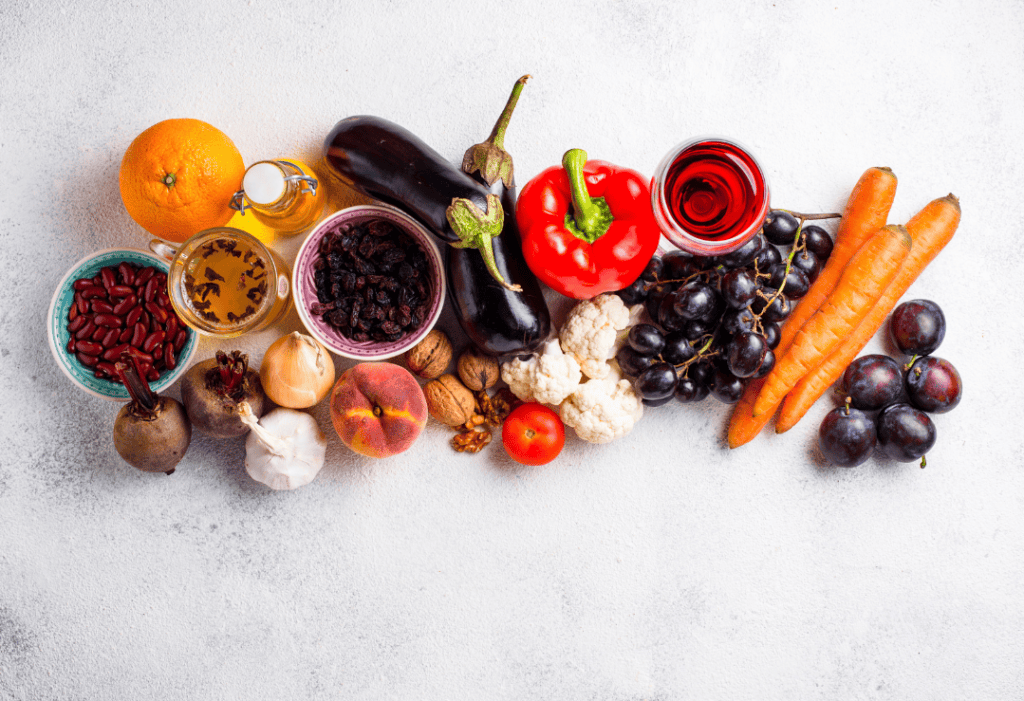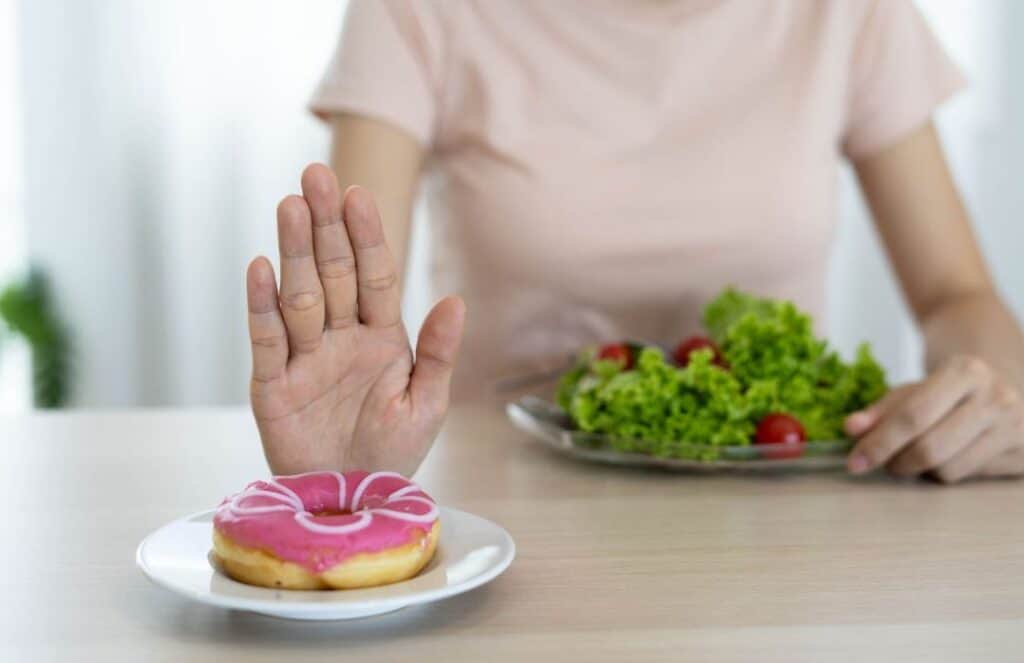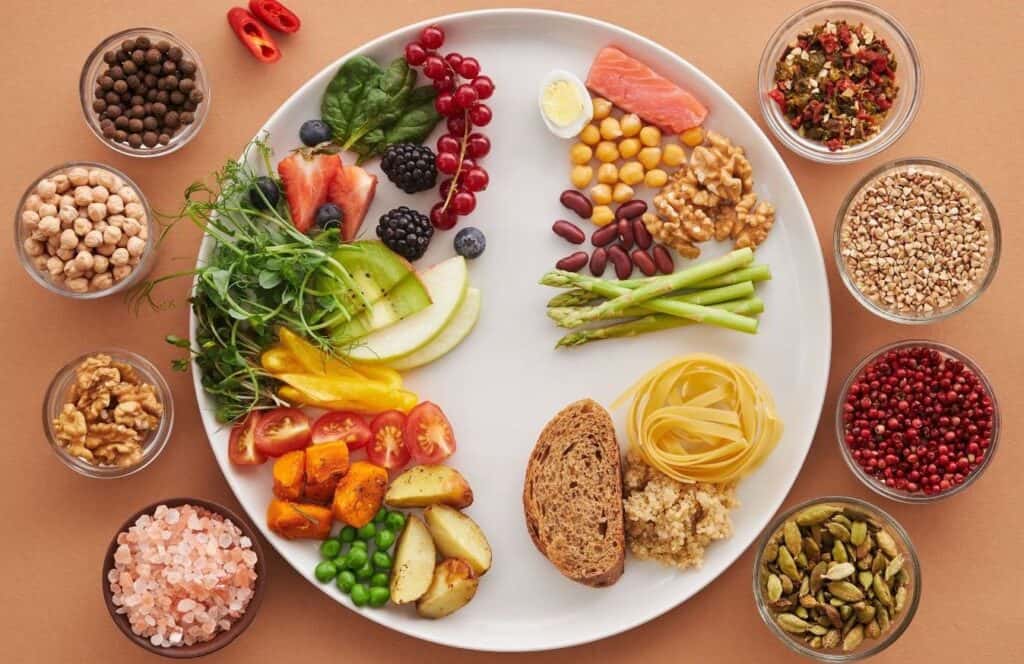Last Updated on: 27th September 2024, 11:58 am
This article was written by Associate Registered Nutritionist (ANutr) Cherie Ko, and reviewed by Registered Dietitian, Sarah Idakwo.
The Glucose Goddess method, created by biochemist Jessie Inchauspé, claims that balancing blood sugar spikes is key to preventing diseases. This method promotes rules such as eating foods in a specific order, avoiding items like oatmeal and honey, and consuming vinegar before meals to minimise glucose spikes. This method has gained popularity online and the book is a bestseller. In this blog we are going to look into the glucose goddess methods, identify if the claims are valid, and how the method could impact disordered eating behaviours.
The Glucose Goddess Method
The Glucose Goddess Method focuses on balancing blood glucose levels, suggesting that fluctuations in blood glucose levels could be harmful to healthy individuals and can increase risk of heart disease, Alzheimer’s disease, fatty liver disease, and cancer in healthy individuals.
This method is delivered through rule-based recommendations on the order in which food should be consumed, what foods should and should not be eaten, and hacks to help flatten our glucose curves.
Key components of this method include eating a savory breakfast, drinking vinegar before meals, and consuming foods in a particular order to minimize glucose spikes. It also involves avoiding certain foods altogether, like oatmeal and honey, which are otherwise considered healthy by many.

Understanding Blood Glucose: The Facts
For healthy individuals, the body is equipped with a natural system to manage blood glucose levels. This system is tightly regulated by hormones like insulin and glucagon.
When we consume carbohydrates, our blood sugar levels naturally rise. In response, the pancreas releases insulin, which allows the glucose to be absorbed by our cells and used for energy or stored for later use. Once this process occurs, blood glucose levels return to a normal range (1).
The temporary increases in blood glucose levels are totally normal, and is our body’s natural response to eating. The body is designed to handle these fluctuations efficiently. In fact, these small, temporary spikes are a sign that the body’s metabolism is working as it should.
The Science behind the method
Inchauspé backs her method with research citations, but it’s important to note that much of what she recommends is based on anecdotal evidence. She openly admits that her methods were developed by experimenting on herself, which raises some red flags from a scientific perspective.
Recently, she launched an “anti-spike supplement,” claiming it can reduce blood sugar levels, insulin resistance, sugar cravings, fatigue, and bloating. According to her, these effects are supported by over 15 clinical studies.
How much of this science is actually right?
On the page that explains the science behind glucose spikes, we do see a lengthy number of research that claims the negative effects of glucose spikes.
However, as we do a deeper look into the studies, many of the studies are done on diets where the daily glucose intakes studied are several times more than what a regular person will consume.
A closer look at the studies being linked to the “anti-spike supplement” reveals that more than half of these studies focus on just one ingredient in the supplement, with the other ingredients backed by only a handful of studies.
Moreover, there is no evidence supporting the efficacy of the specific formula used in the supplement, as it has not undergone clinical trials. While individual ingredients might offer benefits, combining them could result in different effects, and these combinations remain untested.
The Glucose Goddess Method and Eating Disorders
The Glucose Goddess method is the rule-based recommendations on when, how and what should be eaten to help flatten our glucose curves. The method involves many rules, such as eating foods in a specific order or avoiding certain foods that have been shown to be beneficial for health, such as oatmeal.

Food labelling and disordered eating behaviour
One key aspect of the glucose goddess method that we often see over social media is the focus on carbohydrates.
Specifically, the method encourages people to only eat carbohydrates after other components of the meal such as vegetables, proteins and fats have been consumed. It recommends only having savoury foods for breakfast, but also demonises certain foods like oatmeal and honey.
Having limitations on food types based on the time of the day and chronological eating could encourage obsessive food behaviour and is also not based on any credible science as having any benefit.
Further, following these rules may cause individuals to limit their food choices or not eat at all, especially in situations where accurately assessing carbohydrate content is difficult or impossible, such as social gatherings or dining out.
There is also the potential to foster a fear of carbohydrates and demonise certain foods. This mindset can easily lead to an unhealthy relationship with food, reinforcing the idea that some foods are inherently “bad”.
Using a Continuous Glucose Monitoring (CGM) in healthy individuals
The promotion of continuous glucose monitoring (CGM) for non-diabetic individuals, as recommended by the Glucose Goddess method, can cause unnecessary harm and may contribute to disordered eating behaviours.
While CGMs are valuable tools for people with diabetes who need to closely monitor their blood sugar levels, their use by individuals without medical conditions could lead to an unhealthy fixation on food and blood glucose responses (2).
The use of CGMs could lead to constantly tracking and analyzing glucose levels, but also create an obsession with keeping blood sugar “perfect”. Such mindsets could escalate into an unhealthy cycle of food restriction, fear of carbohydrate-rich foods, while creating hyper-vigilance and anxiety around food choices, meals and snacks.
For those already prone to disordered eating or orthorexia, using a CGM can exacerbate existing food anxieties, leading to an over-reliance on data rather than trusting your body and eating in an intuitive way, making it more difficult to develop a balanced, flexible relationship with food.
Some good in the method
While most of this blog does aim to debunk the recommendations of the glucose goddess method, some of its advice can be beneficial.
Recommendations like “putting clothes on your carbs” (pairing carbohydrates with protein or fat), “eating whole fruits,” and “stopping calorie counting,” are not revolutionary ideas but balanced, practical approaches to nutrition that have been around for years.

Conclusion
While some aspects of the method can be beneficial, the majority promotes unnecessary food restriction and creates an environment of fear which can create an unhealthy preoccupation with food behaviors. Before adopting any dietary approach, it’s important to evaluate whether the recommendations are suitable for your lifestyle and it is always important to avoid any extremes. Except if you have an allergy, always be weary of people who demonize one food group.
Make sure to consult a healthcare professional or dietitian before deciding to make major dietary changes. If you need additional support to decide which practices truly support your overall well-being, click here to book your free discovery call today.


